This article was medically reviewed by Luba Lee, FNP-BC, MS and by wikiHow staff writer, Danielle Blinka, MA, MPA. Luba Lee, FNP-BC is a Board-Certified Family Nurse Practitioner (FNP) and educator in Tennessee with over a decade of clinical experience. Luba has certifications in Pediatric Advanced Life Support (PALS), Emergency Medicine, Advanced Cardiac Life Support (ACLS), Team Building, and Critical Care Nursing. She received her Master of Science in Nursing (MSN) from the University of Tennessee in 2006.
There are 9 references cited in this article, which can be found at the bottom of the page.
wikiHow marks an article as reader-approved once it receives enough positive feedback. In this case, 93% of readers who voted found the article helpful, earning it our reader-approved status.
This article has been viewed 93,592 times.
Oak mites can cause itchy rashes and small raised bumps on your skin that are no fun. Although they prefer to snack on insects and oak leaves, they'll often turn to humans as a food source when these usual food sources become scarce.[1] If you've gotten oak mite bites, you can care for them at home or get help from your doctor. Fortunately, you can also prevent oak mite bites from happening again!
Steps
Caring for Bites at Home
-
1Clean your bites with antiseptic. Apply rubbing alcohol or witch-hazel to a clean cotton ball to gently cleanse your bites. Pat the bites dry with a clean towel, and discard the cotton ball.
-
2Avoid scratching the bites. Unfortunately, oak mite bites can be especially itchy. You can even develop a rash! However, scratching can break the skin, increasing your risk of a bacterial infection.[2]
- If you do break the skin, you should see your doctor.
Advertisement -
3Use calamine lotion to soothe the affected skin. Calamine lotion can help with itching, which gives you relief and helps limit scratching.[3] Wash your skin and hands, then shake the bottle. Apply a small amount to a cotton swab and dab it onto the bites or rash. Continue to apply lotion until the entire affected area is covered. Let the lotion dry before putting on your clothing.
- Talk to your doctor before applying calamine lotion on children under the age of 12. You should also speak to your doctor if you're pregnant or breastfeeding.
- Be sure to follow all directions on the bottle, including dosage instructions. You can reapply the lotion every few hours, as needed.[4]
-
4Apply hydrocortisone cream to your bites. You can purchase 1% hydrocortisone cream over-the-counter. This will help with itching. Wash your hands and clean the affected area. Then rub a small amount of hydrocortisone cream into the bites or rash.
- Use the smallest dose possible and wait at least 4 hours before reapplying the cream.[5]
- If the cream doesn't relieve your itch, you may need something stronger. Your doctor can prescribe a stronger treatment.
- Do not apply the cream to a child under the age of 12 without talking to a doctor.
- Make sure that you follow all of the directions on the bottle.
-
5Take an antihistamine after talking to your doctor. An antihistamine can reduce the reaction that your body has to the bites. This can reduce the itching, redness, and possible rash. You can use an over-the-counter option, such as diphenhydramine (Benadryl) or a non-drowsy alternative, such as cetirizine (Zyrtec) or loratadine (Claritin).
- Follow the dosage instructions on the packaging, as they vary. For example, some antihistamines may be taken every 4 hours, but others are taken once a day.
- Talk to your doctor before taking an antihistamine, especially if you're already on medication.
-
6Take an oatmeal bath if a large area is affected. An oatmeal bath can soothe itchy skin, giving you all over comfort. Fill the bathtub with warm water, then add 1 cup (85 g) of ground old fashioned oatmeal or store-bought colloidal oatmeal. Soak for 10-15 minutes to see results. Rinse off the oatmeal after your bath.
- It's best to only take one oatmeal bath per day, as the oatmeal can dry out your skin if you bathe in it for too long or too often. Dry skin will make your itch worse.[6]
- Colloidal oatmeal is finely ground oatmeal that is intended for bathing. You can find it online or at drugstores.
- Alternatively, you could use baking soda instead of oatmeal. Simply sprinkle about 1 cup (128 g) of baking soda into warm water.
Getting Medical Care
-
1See your doctor if the itching persists or the skin is compromised. Most oak mite bites can be treated at home, but intense itching may require a prescription. Additionally, you should see a doctor if your skin is broken, as this can lead to an infection.
- If the bites aren't better in one week, see your doctor, even if the itching is manageable.[7]
- Your doctor can provide you with treatments that are not available over-the-counter.
- Signs of potential infection include skin that is inflamed, hot to the touch, or leaking pus.
-
2Ask your doctor for a prescription steroid cream to treat the itch. A prescription steroid cream can tackle even intense itching. Wash your hands and cleanse the affected area. Then apply a thin layer of cream over just the bites and/or rash. Use soap and water to thoroughly wash your hands afterwards.
- Follow all instructions on the medication, including your dosage instructions. You may be able to apply the cream every few hours, but follow your doctor's advice.
- If you're pregnant or nursing, your doctor may decide that steroid creams are not a good option for you.
- If the cream is for a child under 12, ask the doctor to clarify the correct dosage and frequency. The doctor may recommend using an over-the-counter option instead.
- Use as little of the cream as possible. Additionally, you should not get it on the skin surrounding the bite.[8]
-
3Take an antibiotic if your doctor diagnoses an infection. Oak mite bites are especially itchy, and frequent scratching can lead to a bacterial infection. If this happens, the doctor will likely prescribe an antibiotic.
- Be sure to finish the entire bottle of medication, even if you start feeling better early.
Preventing Oak Mite Bites
-
1Keep your doors and windows shut. The mites are usually most problematic in late summer through fall when their population reaches its height. More mites mean more encounters and greater demand on the food supply. Since they're carried by the wind, they can easily end up in your home via open doors or windows.[9]
- Since they are small enough to pass through screens, closed windows are the best way to prevent them from entering your home.
-
2Wear protective clothing when doing yard work. Although it may be warm, long sleeves, pants, gloves, and a floppy hat can limit your exposure to oak mites. Since yard work stirs up the mites, it's best to wear as many clothes as possible to prevent them from getting on your skin.
-
3Use DEET insecticide when outdoors. Many insecticides are not effective against oak mites, but DEET can be. Spray the product onto yourself before going outside.[12]
- Since it's not always effective, it's a good idea to use DEET in addition to other protective measures, such as wearing extra clothing.
- Be sure to follow all instructions and warnings. Like all insecticides, DEET can be harmful if used incorrectly.
-
4Shower immediately after spending time outdoors. This will remove any mites that are lingering on your skin or in your hair. It won't heal bites that you've already received, but it will prevent the mites from biting you more.[13]
-
5Wash clothing you wore outdoors in hot water as soon as you get home. After you spend time working or playing outdoors, your clothes could harbor oak mites. Washing your clothes as soon as you come into the house can prevent them from sticking around to bite you. It's best to use a hot setting to ensure that the mites don't survive the wash.[14]
-
6Bathe your pets if they go outside. Pets can also pick up the mites and may bring them into your home. This is especially true if your pet likes to roll around in the leaves, which can harbor the mites. Give your pet a bath in warm water, using an appropriate pet shampoo.
- Always use a pet shampoo that is formulated for that particular animal. Do not use human shampoo, as this can be harmful to your pets.
References
- ↑ http://ento.psu.edu/extension/factsheets/leaf-gall-itch-mite
- ↑ http://ento.psu.edu/extension/factsheets/leaf-gall-itch-mite
- ↑ http://ento.psu.edu/extension/factsheets/leaf-gall-itch-mite
- ↑ https://www.drugs.com/mtm/calamine-topical.html
- ↑ https://www.drugs.com/cdi/hydrocortisone-cream-gel-ointment-and-solution.html
- ↑ https://www.drugs.com/npp/oats.html
- ↑ https://www.nhs.uk/conditions/insect-bites-and-stings/
- ↑ https://www.nhs.uk/conditions/topical-steroids/
- ↑ https://westlakehardware.com/resources/tips-tricks/how-can-i-prevent-oak-mite-bites/
- ↑ https://westlakehardware.com/resources/tips-tricks/how-can-i-prevent-oak-mite-bites/
- ↑ http://redcrosspharmacy.com/preventing-and-treating-oak-mite-bites-this-fall/
- ↑ https://www.consumerreports.org/insect-repellent/how-safe-is-deet-insect-repellent-safety-a4952100929/
- ↑ https://westlakehardware.com/resources/tips-tricks/how-can-i-prevent-oak-mite-bites/
- ↑ http://ento.psu.edu/extension/factsheets/leaf-gall-itch-mite
About This Article
Oak mite bites can cause an itchy rash to appear, but there are things you can do at home to help alleviate your discomfort. First, clean the bites with an antiseptic like rubbing alcohol or witch hazel to cleanse the area. Then apply either calamine lotion or 1% hydrocortisone cream to help relieve the itchiness of the rash. Try your best to avoid scratching the area, as this could break the skin and cause an infection. You can also take an antihistamine to help lessen the severity of your body’s reaction to the bites, which may help to make you more comfortable. Visit your doctor for medical treatment if the rash is intensely itchy, lasts for longer than 1 week, or if the skin is broken to avoid getting an infection. For more advice from our Medical co-author, like how to prevent future oak mite bites, continue reading.
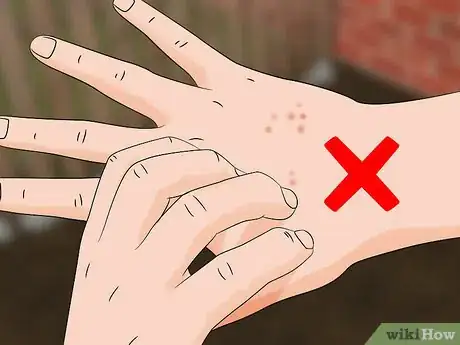
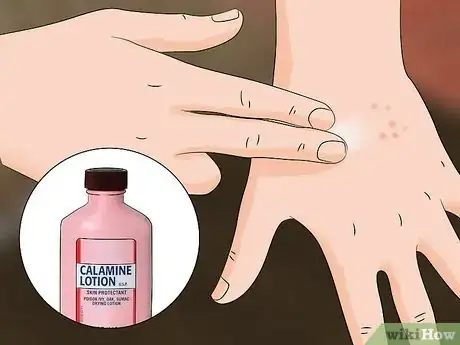

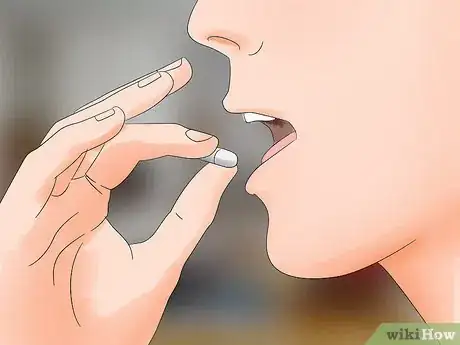


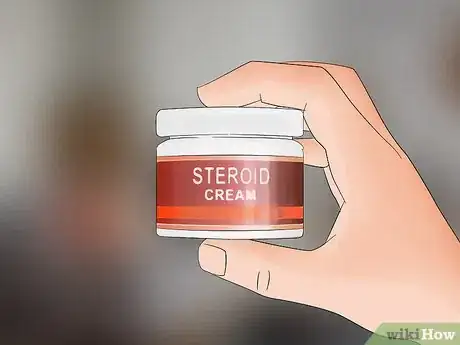




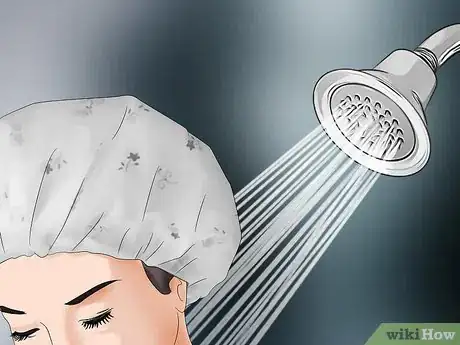


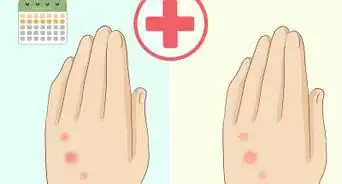

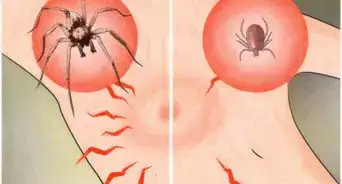
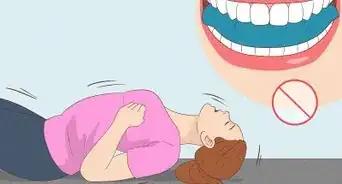


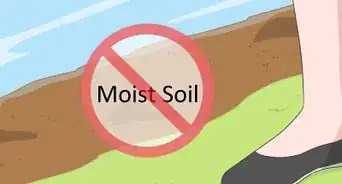



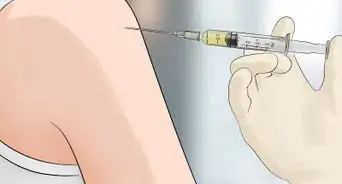


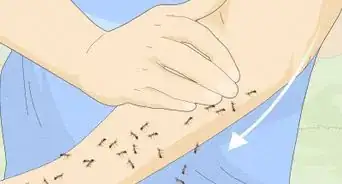









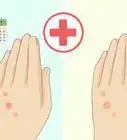
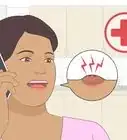
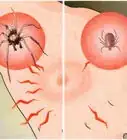




































Medical Disclaimer
The content of this article is not intended to be a substitute for professional medical advice, examination, diagnosis, or treatment. You should always contact your doctor or other qualified healthcare professional before starting, changing, or stopping any kind of health treatment.
Read More...